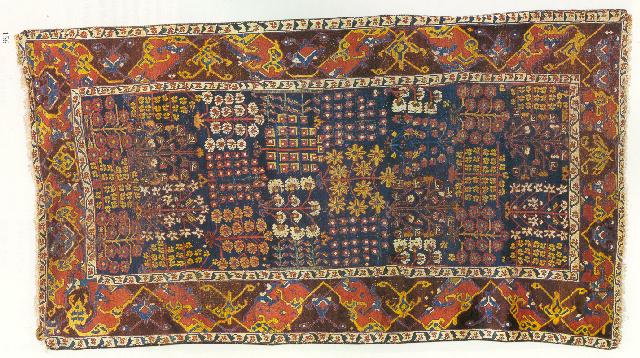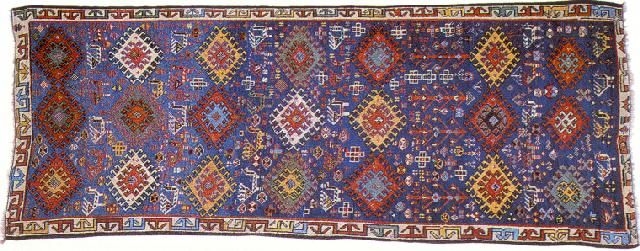The reason that I feel that the issue of whether a given piece is or is not an "authentically" Kurdish weaving could distract us from appreciating Kurdish weaving more tentatively defined, is that I doubt that we are in a position yet to be so conclusive. It seems unlikely that there is much Kurdish scholarship yet to share.
If you had suggested that we explore "Some Indicators of "Kurdishness" in Selected Flatweaves," I think Eiland's argument would not apply but the title seemed to suggest that we can in fact indicate what authentic Kurdish weaving is, and that seems to me likely to lead to an exchange of opinion not heavily enough laden with information. Perhaps your word "introduction" and your acknowledgement that indicators you cite are "incomplete" are in fact the tentativeness I would seek.
I acknowledged that your examination of flatweaves and their structure is the best ground for your search but do I understand that you will not be suggesting that any pile pieces are authentically Kurdish?
You mention the mina khani design and I would be surprised if this could be shown to be strictly Kurdish in origin. It is usually described as "Persianate" but as I'm sure you know was used in quite sophisticated versions by the Turkmen and the Balouch, among others. Perhaps you have said but I'm not clear yet about the basis for your indication that specific designs are Kurdish.
Anyway, the reason why I jumped on your word "authentic" is that it seemed to me that a debate about what is authentically Kurdish could focus our attention on a "side issue," so to speak, when the central thing to notice might be that a rug suspected of being Kurdish (but without any real ability to prove it conclusively) has beautiful color, wonderful wool, has a wonderfully imaginative design drawn with great skill. Here is a rug I encountered by chance this afternoon.

It is labeled "proto-Kurdish," which I guess means "not quite." But it seems to me that its merits are largely independent of whether we can determine whether it is authentically Kurdish.
Steve -
I did not quite ask "Is there something particularly noteworthy or meritorious about (authentic) pieces?" What I questioned was the usefulness of a sharply focused pursuit of the question of "authenticity." If we could determine what pieces are authentically Kurdish we could then ask as a separate question whether we found them meritorious in some way(s).
Steve you also say:
"One of the things I find interesting about filikli, for instance, is that they may have been woven more or less as they are today, several thousand years ago."
My thought:
I have to be careful here. I do not think it legitimate for any of us to recommend interests in collecting to anyone else. But there is something about this very real interest in the "old" that often seems odd to me. It seems frequently to be the occasion for inconsistency. Some very experienced collectors who apply very high standards to the weavings they see generally to be worthy of attention and of collection, seem to suspend many of these criteria when they encounter contemporary rugs with structures that appear to resemble that of very old weavings. I ask this question as a student but why are fikili worthy of the kind of interest being paid to them? Bold graphic impact and colorful but also crudely drawn at a level it seems likely any of us could manage and their brilliant colors may often owe something to synthetic dyes. Their structural similarity to the very old doesn't do much for me. Perhaps I am a victim of Mr. Emerson's hobgoblin.
Having spoken my piece here, I stand ready to learn about further indicators of authentic Kurdishness that Daniel indicates he will supply.
Regards,
R. John Howe

